ART SPACE = URBAN SPACE
Firstly, the building is laid out a part of an urban network of routes and “sees itself” as a space for movement given solid form in an overall context. This context is also articulated in the general urban system by means of numerous smaller interventions (see landscape planning). The commitment to an open ground floor zone evokes the motif of the building as path and here one could be inclined to see a switching point in the city’s circulation network. In this way the KiKuLa becomes an important connecting point and enhances the little-used park by making it an important point of contact and junction. The building is therefore a link between outdoor space and interior space and, essentially, between the internal functions.
Children Art Laboratory
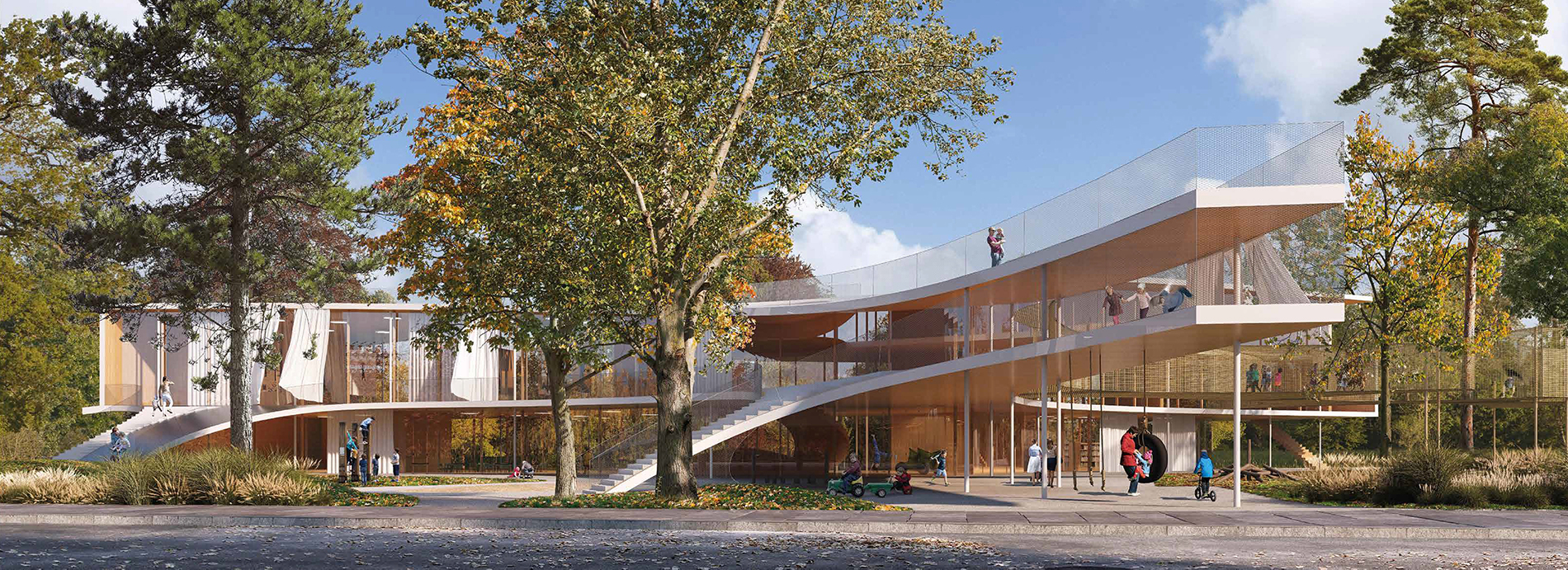
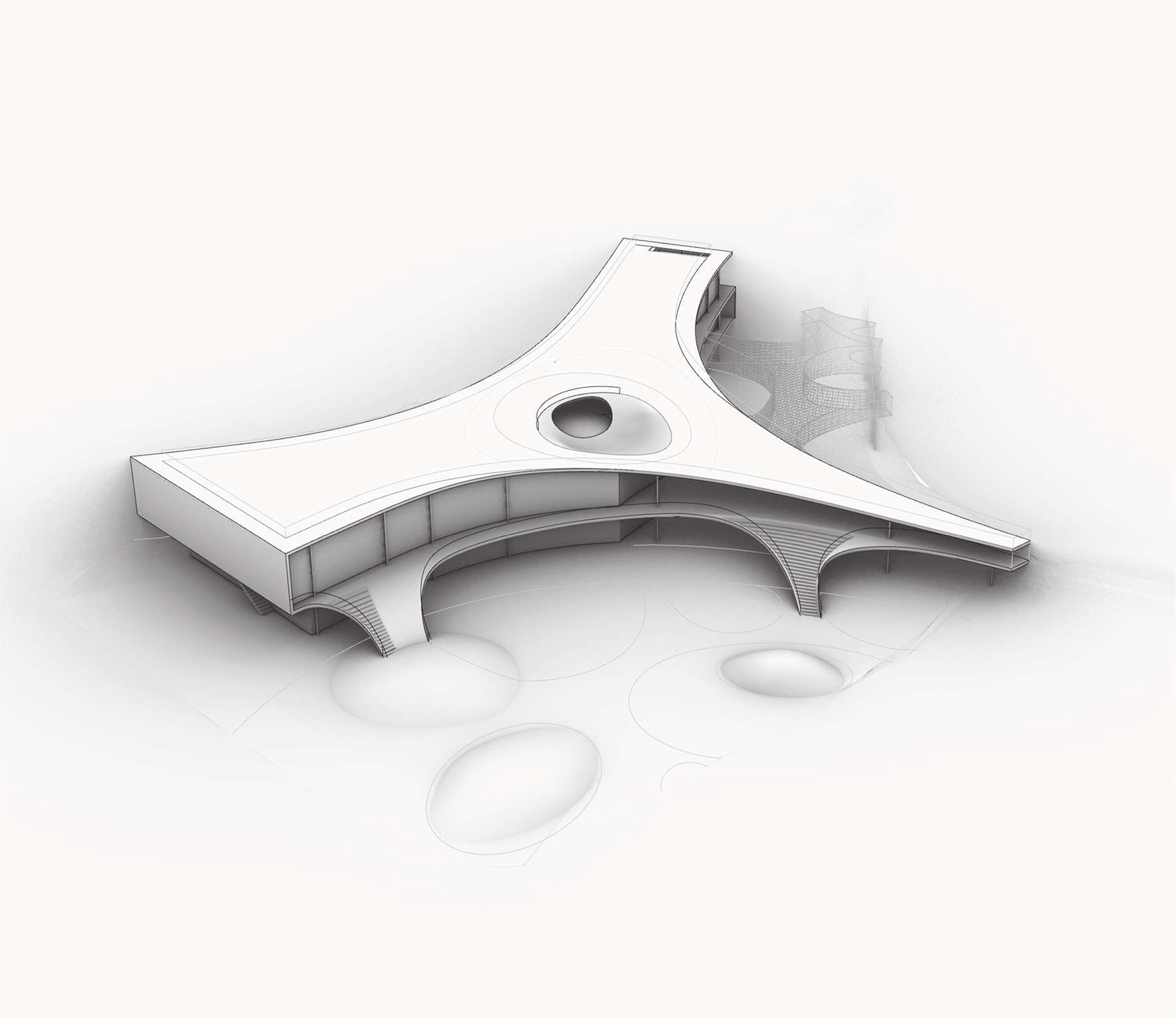
The object appears as an elegant, floating, transparent, almost diaphanous structure.
Year
2020
Venue
St. Pölten
State
Competition
Category
Education
Size
2.818 m²
Year |
Venue |
State |
Category |
Size |
|---|---|---|---|---|
2020 |
St. Pölten |
Competition |
Education |
2.818 m² |
Year
2020
Venue
St. Pölten
State
Competition
Category
Education
Size
2.818 m²
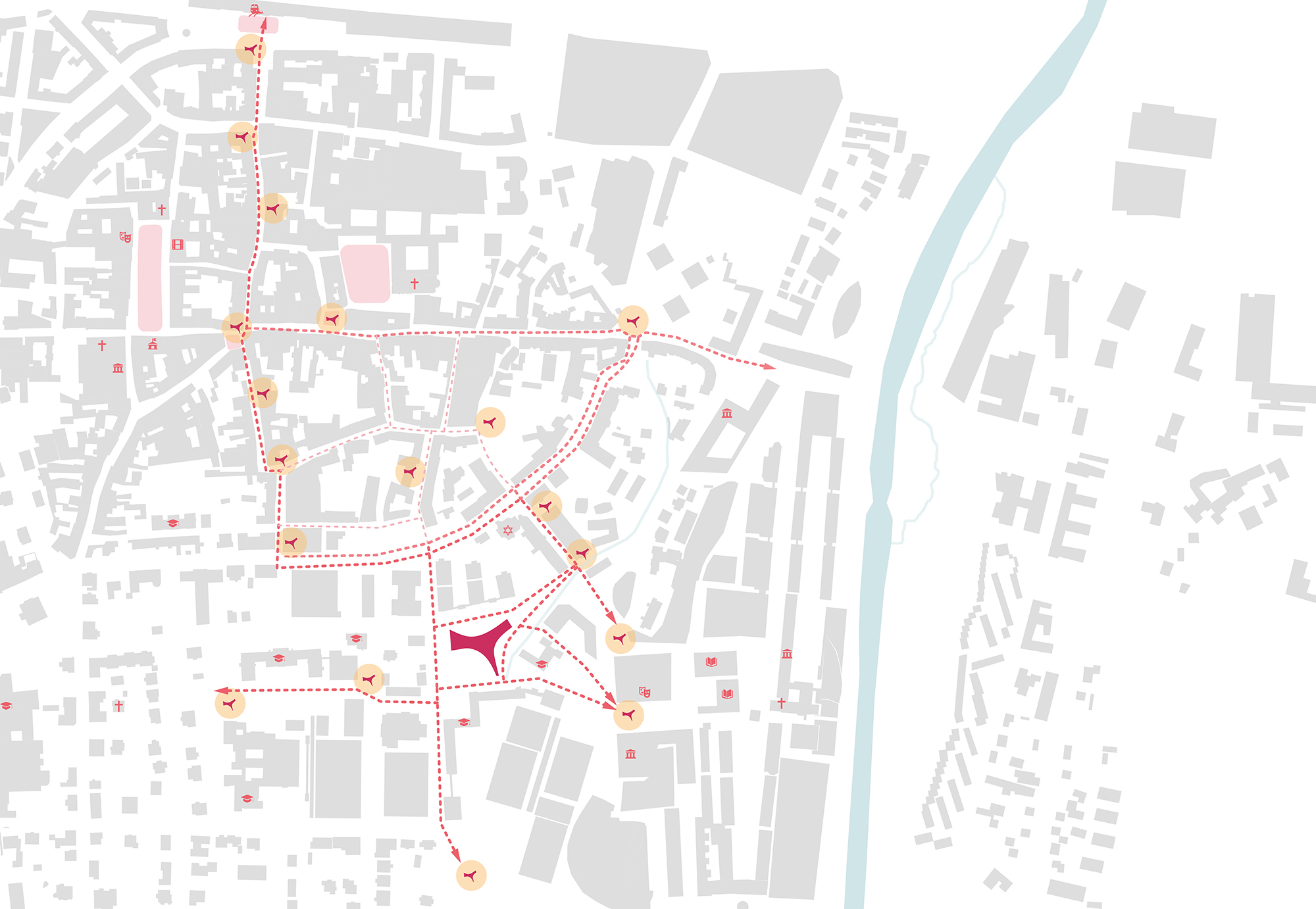
ART SPACE = LANDSCAPE SPACE
The building was also derived from a direct correspondence with the existing park landscape and its distinctive trees. It is cut out of the ground like a piece of a puzzle and consequently becomes part of a coherent figure-ground formation. The interplay unifies the building with its surroundings. The approach to the landscape design follows this principle and the design approach is depicted in the figure of the outdoor space. Although the closed volumes within the thermal envelope comply with the zoning regulations as regards development, the building intervenes in the landscape like a usable sculpture: terraces on different levels become an outdoor lab, a climbing park and sheltered outdoor areas. Overall, the KiKuLa is laid out as a flowing structure in the correspondence between inside and outside, thus becoming a part of the LANDSCAPE SPACE that is to be used.
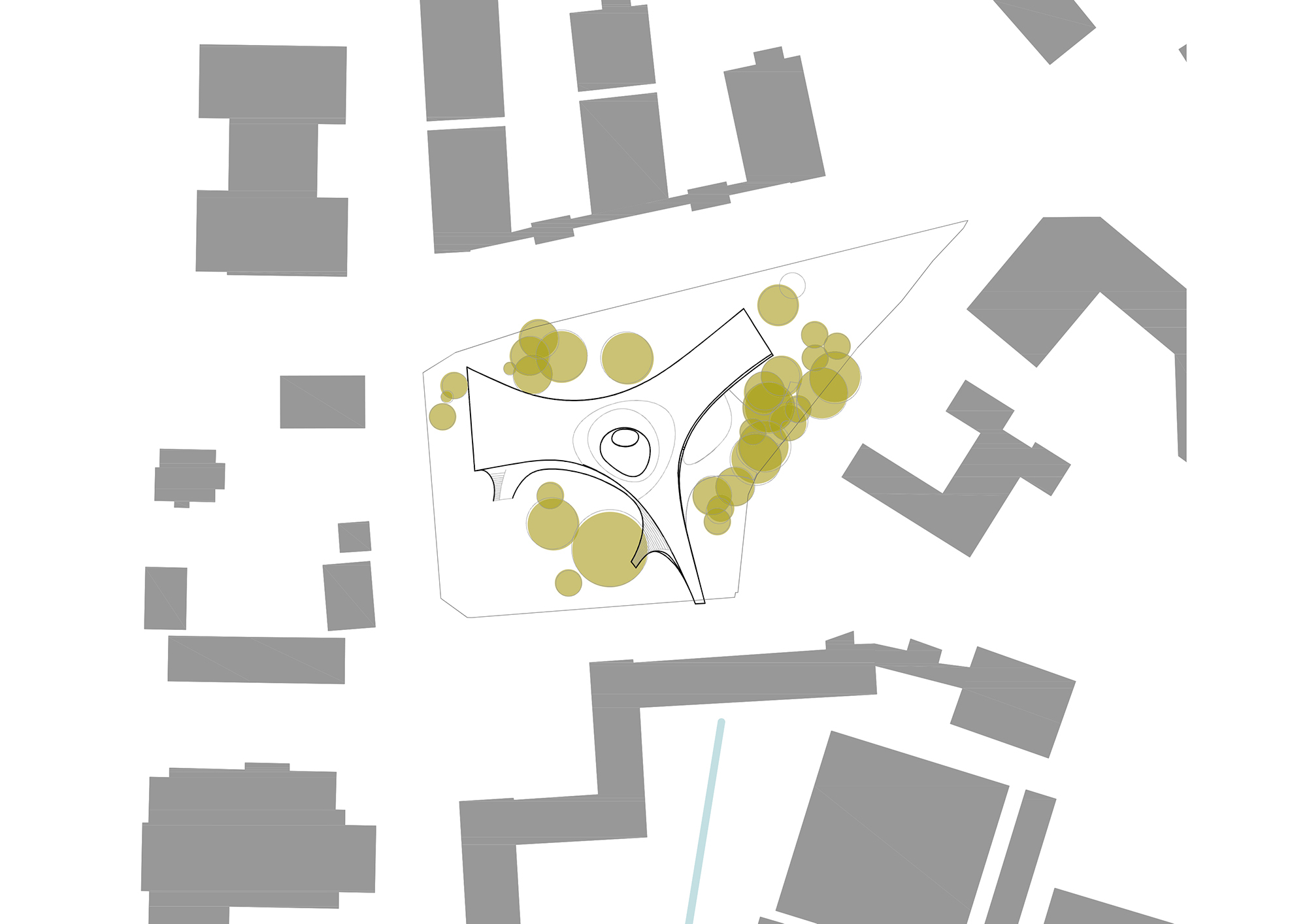
ART SPACE = HABITAT
An awareness of the extent to which outdoor space is an important requirement for a successful life, leads to the idea that KiKuLa can also have an anthropological component in designing the world. In a kind of playful approach, a creative overall structure can be developed that both allows and strengthens different perceptions and developments and, through the interaction of the various functions, produces new, diverse experiences of the world. Here, too, the transitory character, positioned between everyday occurrences and the experience of art, plays an important role in the layout of the program within the building. Stretched out like triangular piece of cloth, the building depicts the categories of play, art and experiment and therefore appeals to the different practices of human existence.
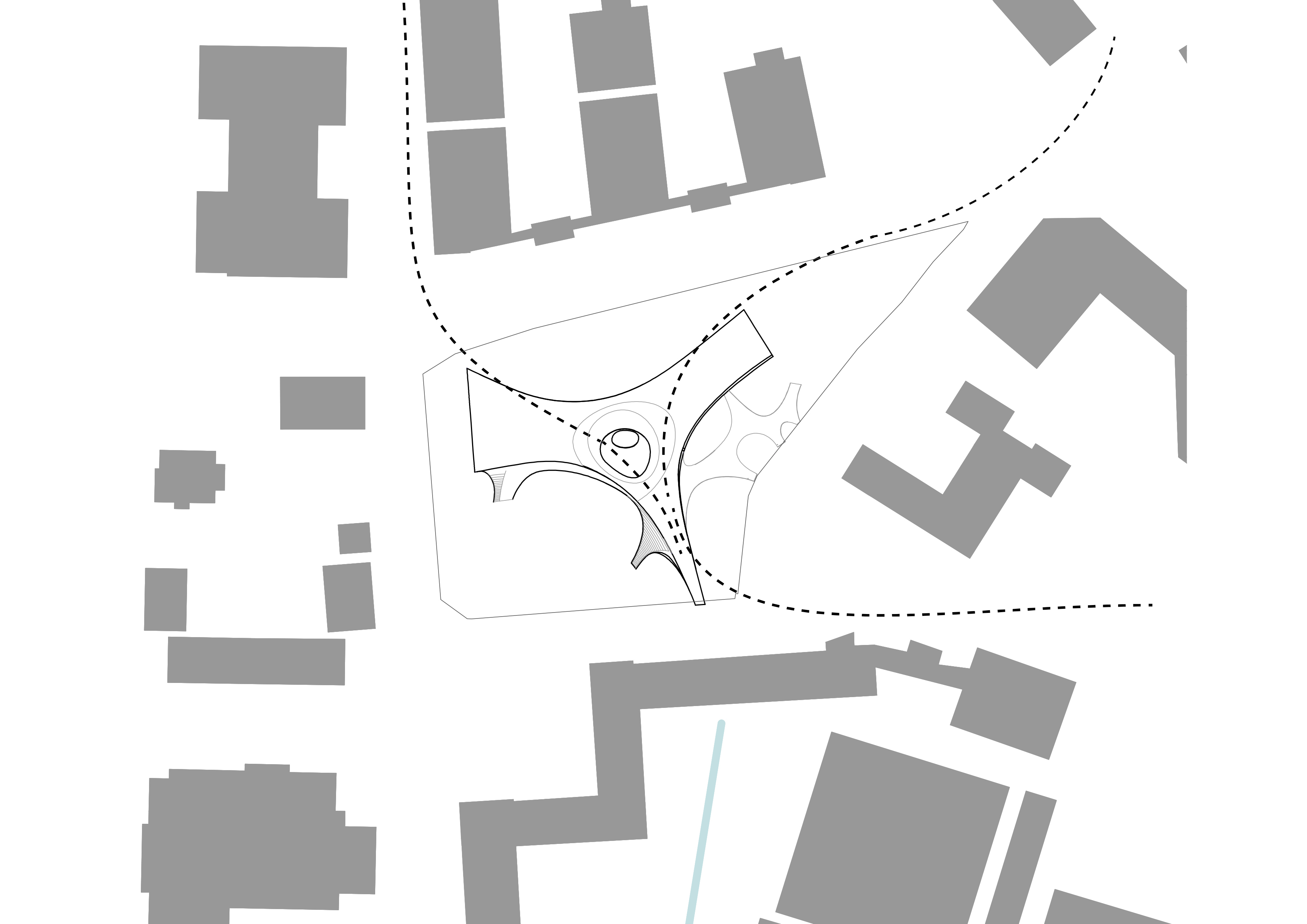
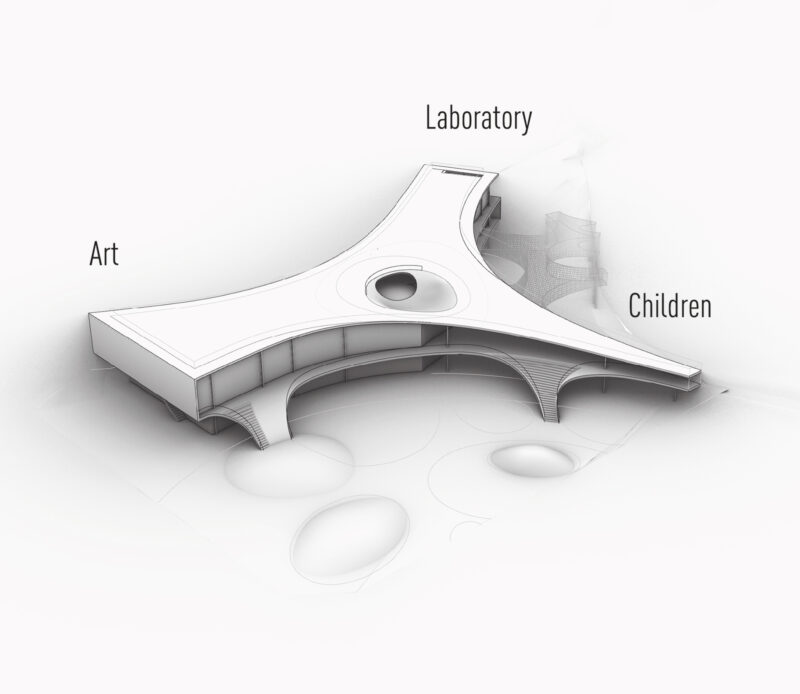
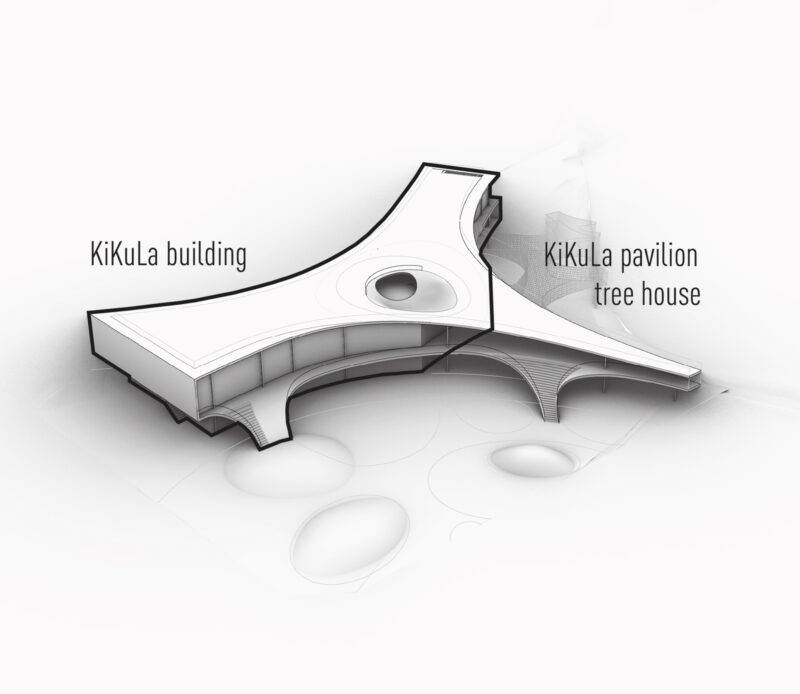
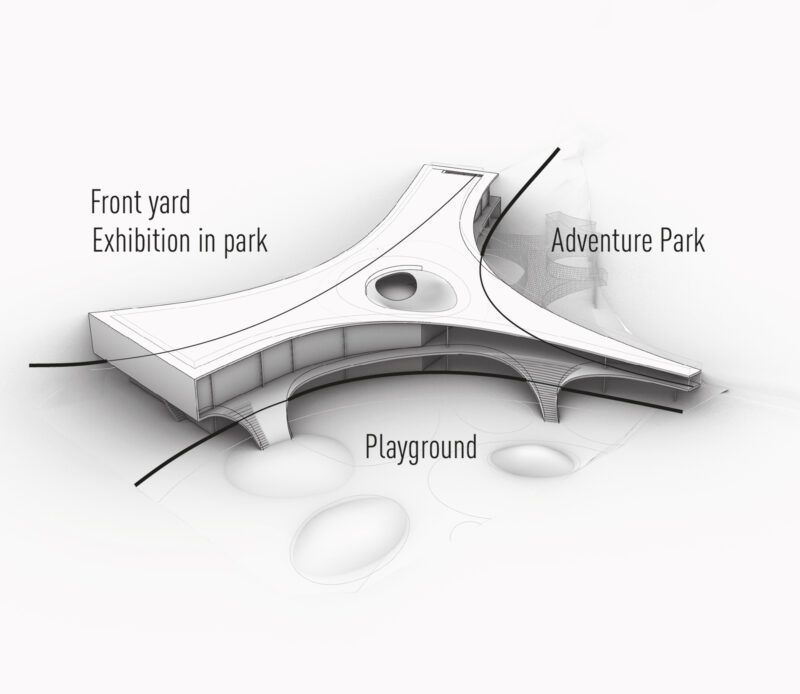
Landscape concept
Together with the architecture the open space of the Kinder Kunst Labor forms a conceptual and design symbiosis and unity. For the children, a varied green fantasy and experience space is opened up. By using a consistent formal idiom that weaves together building and landscape different programs are defined and unified. The special location in the city of St. Pölten, between the old town and the government district, defines the site as a hub for pedestrian connections.
Play districts
So that the ideas of the Kinder Kunst Labor can be visibly and symbolically experienced in urban space, it is recommended that small play facilities should be arranged like a string of pearls along the relevant connections to the different urban districts, to the town centre, and to the train station, which would upgrade the entire urban space for children. The interventions that accompany the route such as graphics on the ground or small pieces of play equipment are like districts for play that quote the characteristic formal idiom of the KiKuLa.
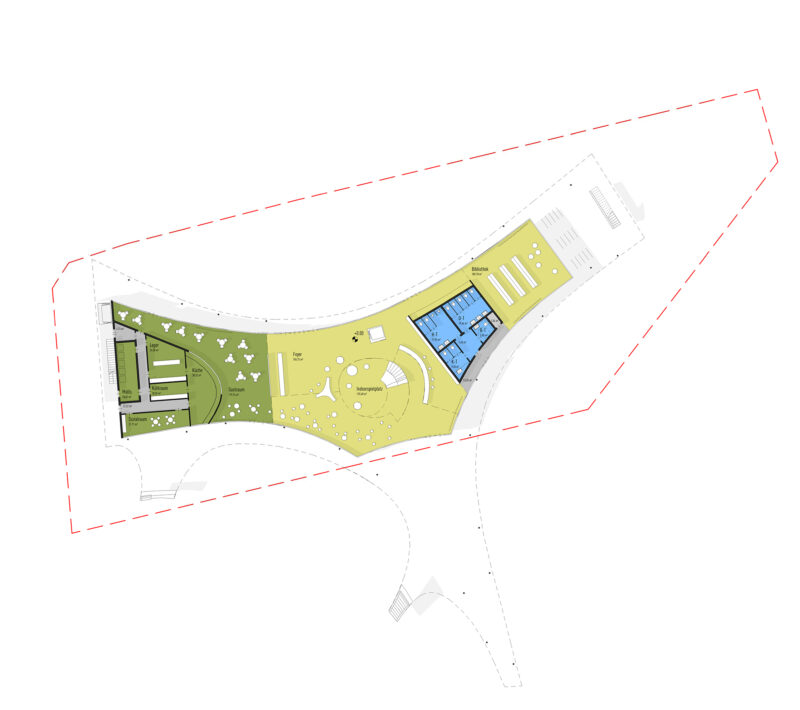
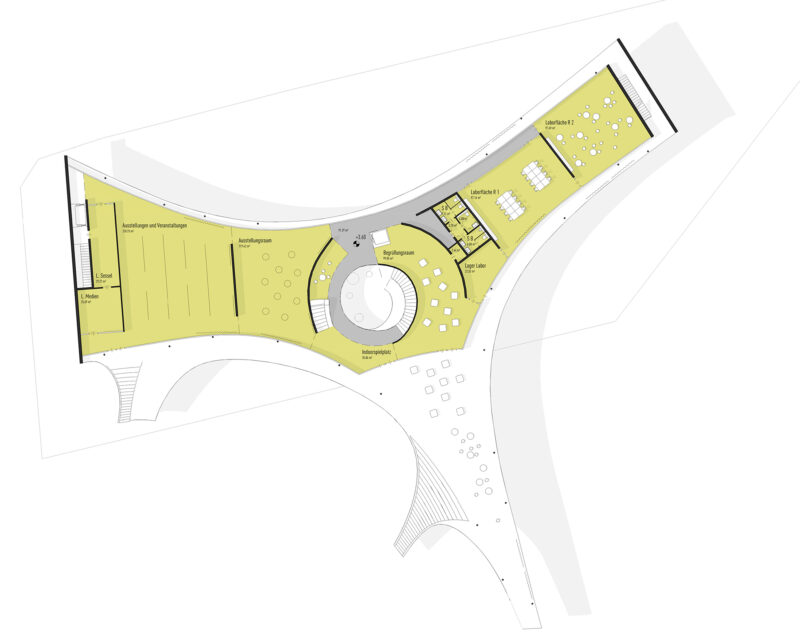
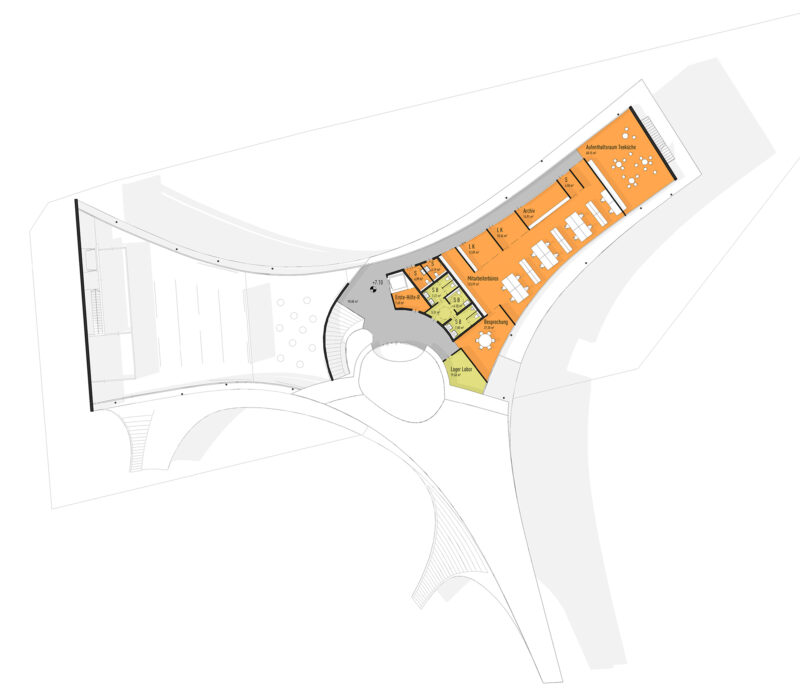
Art for children, with and by children does not take place in an ivory tower.
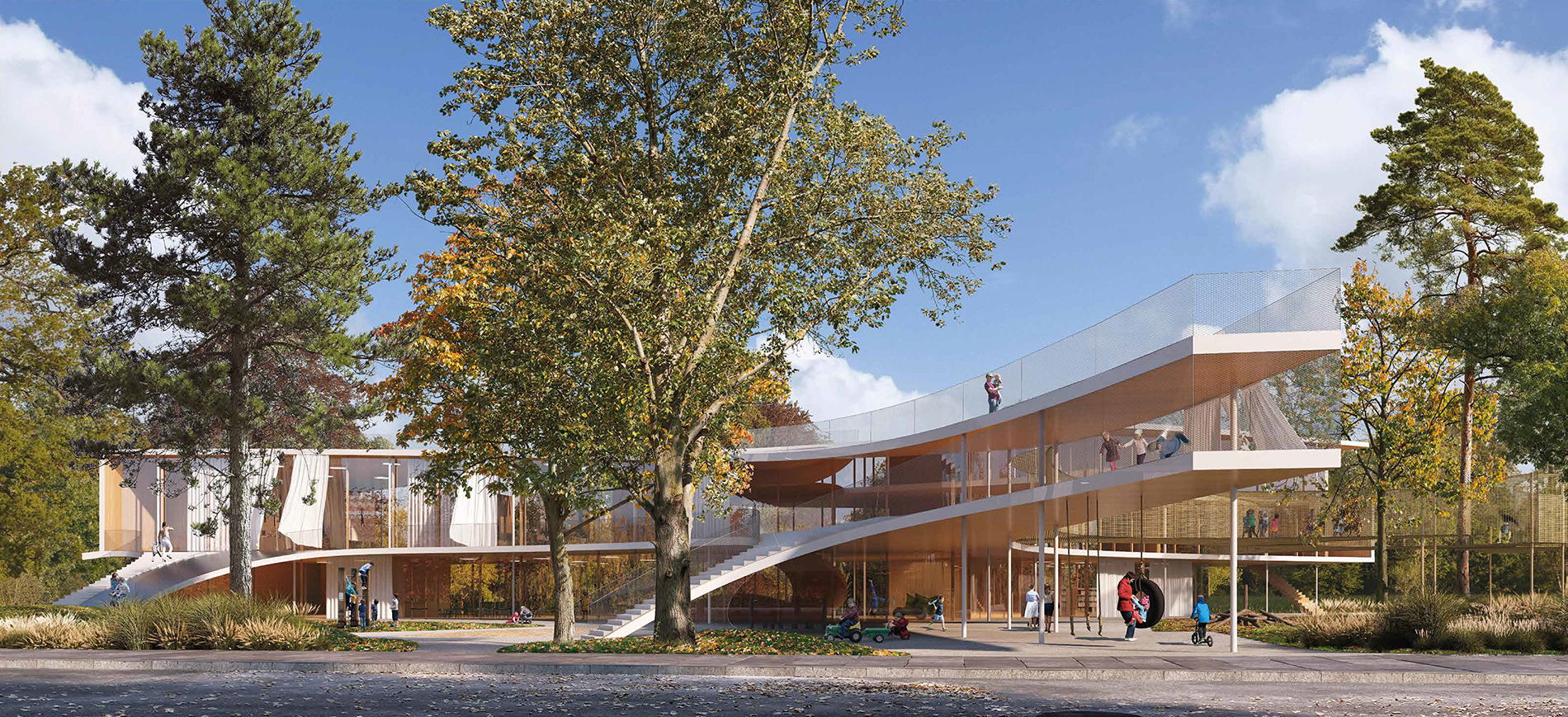
Garden spaces
The configuration of the building defines three garden spaces, which have a different direction, and through the careful positioning of the building volumes allows most of the existing trees to be preserved and protected. A series of newly planted trees augment the picture. The ground cover is made of materials that allow water to infiltrate, e.g., rubber granulate, can be coloured, are with or without a fall protection function, and have water-bound surfaces. The play facilities are developed throughout as a contextual, scenic game, where it is not the individual playground equipment but the landscape narrative that forms the frame.
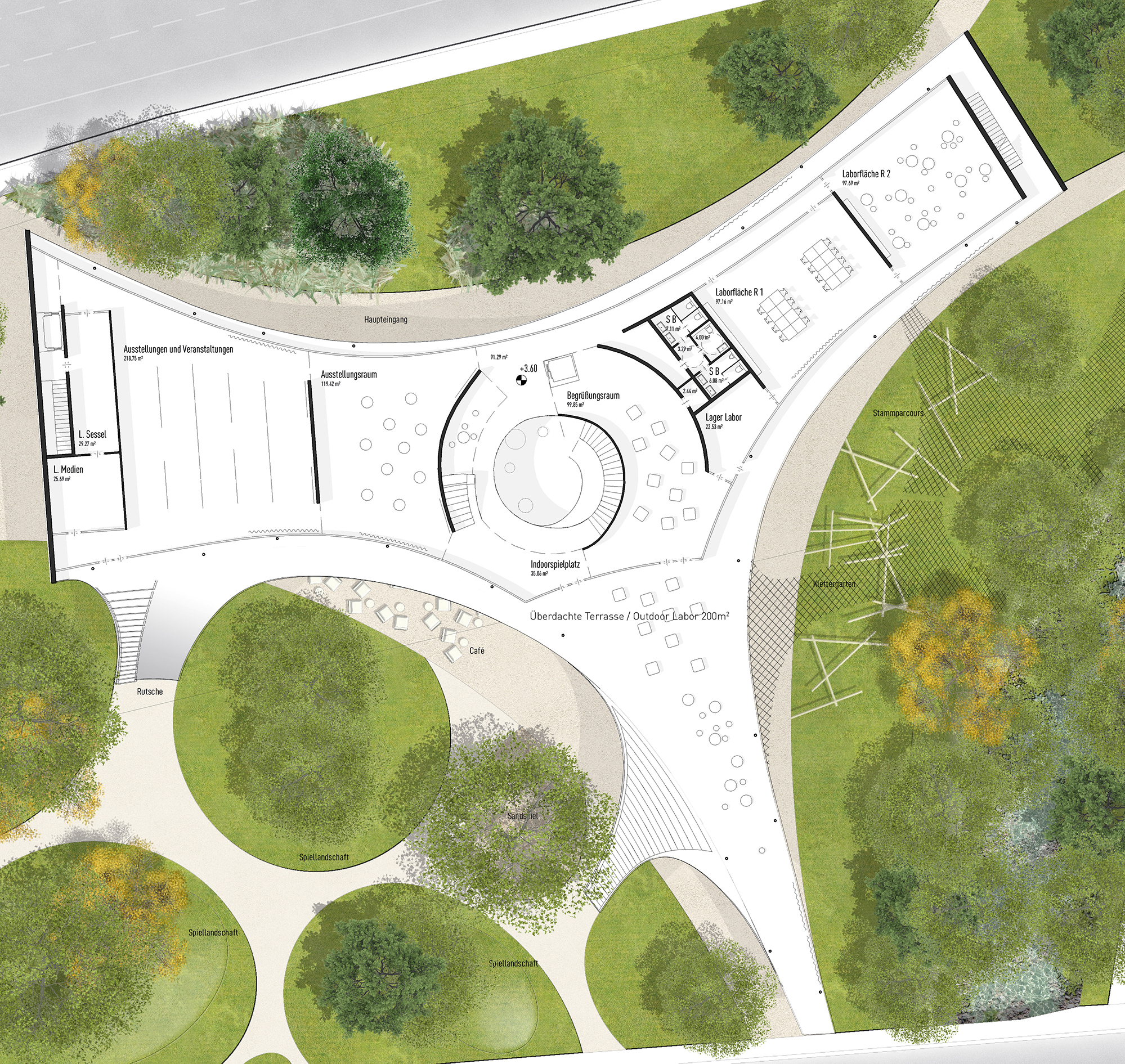
The northern area towards Wiener Straße serves as the formal entrance. The south-western park area is conceived as a play landscape and with its generously dimensioned terrace borders the building directly. The green areas developed out of the building’s movement incorporate the existing trees, sand play area, and play hill and, additionally, at points they allow a flexible interplay with various concepts and installations developed in the building. In the south-eastern garden bordering the Mühlbach adventure play meets urban wilderness. A further crescent-shaped connecting path creates a paved front area, which can be used as an outdoor space for events.
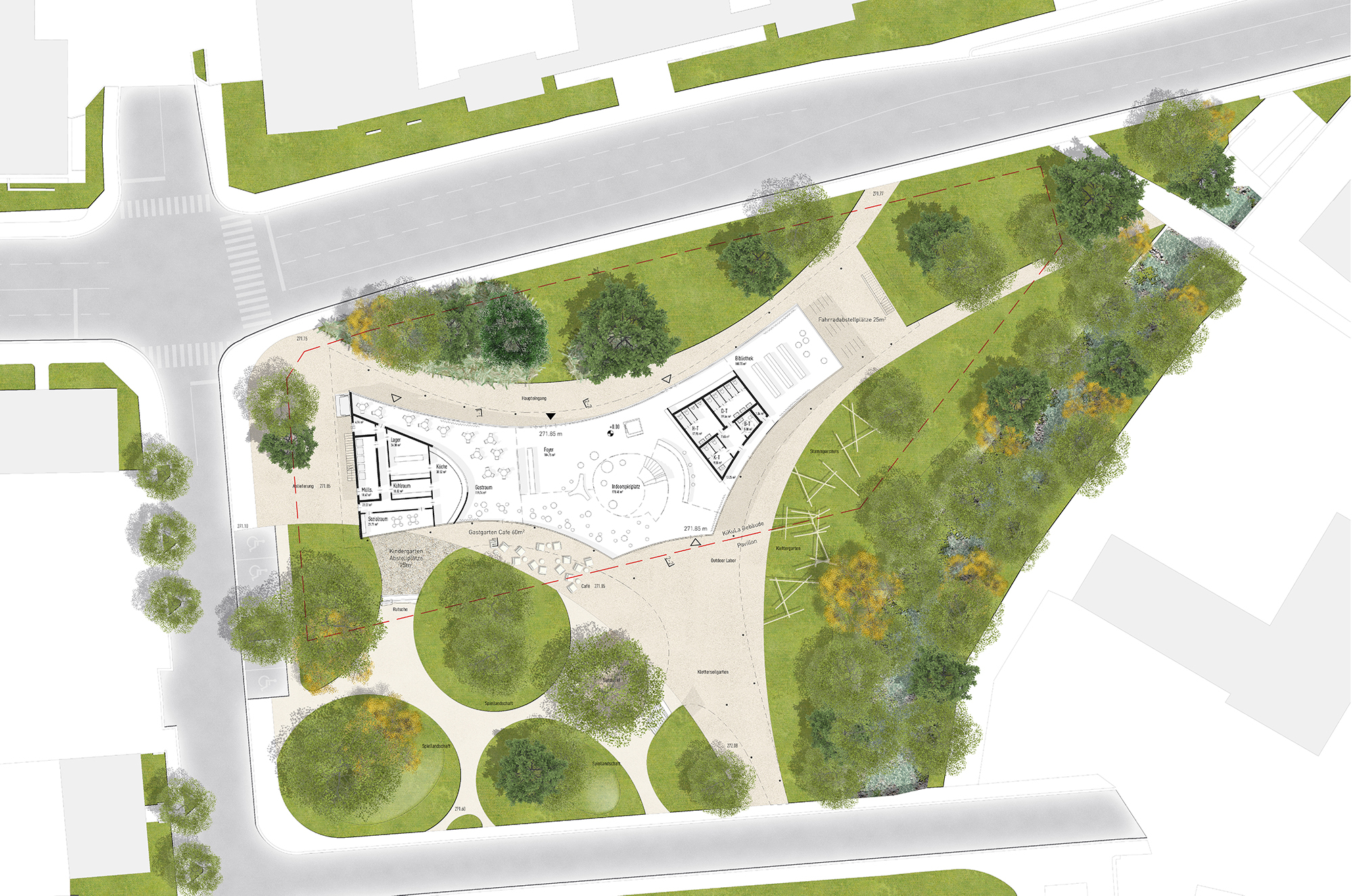
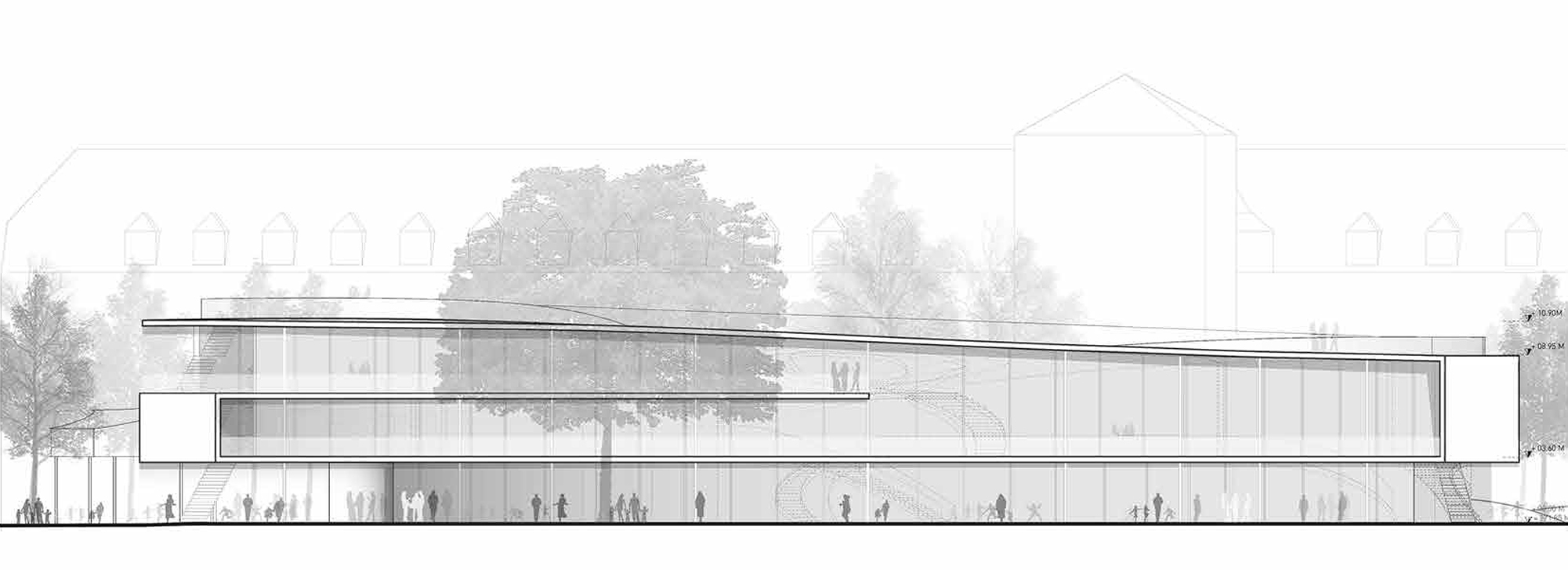
Architecture
Pichler & Traupmann Architects
Design team
Bartosz Lewandowski (team leader)
Leonie Eitzenberger
Anna Gulinska
Pitor Pindor
Client
Municipality of St. Pölten
Landscape planning
Lindle+Bukor - atelier für landschaft, Vienna
Hard facts
Start of planning: 2020
Net floor area: 2.451 m²
Gross floor area: 2.818 m²
Function: Laboratory, workshop-/exhibition rooms for children
Scope: Open, single-stage competition
Rendering
Patricia Bagienski, Vienna
Model
Harald Schmidt, Vienna
Award
Mention